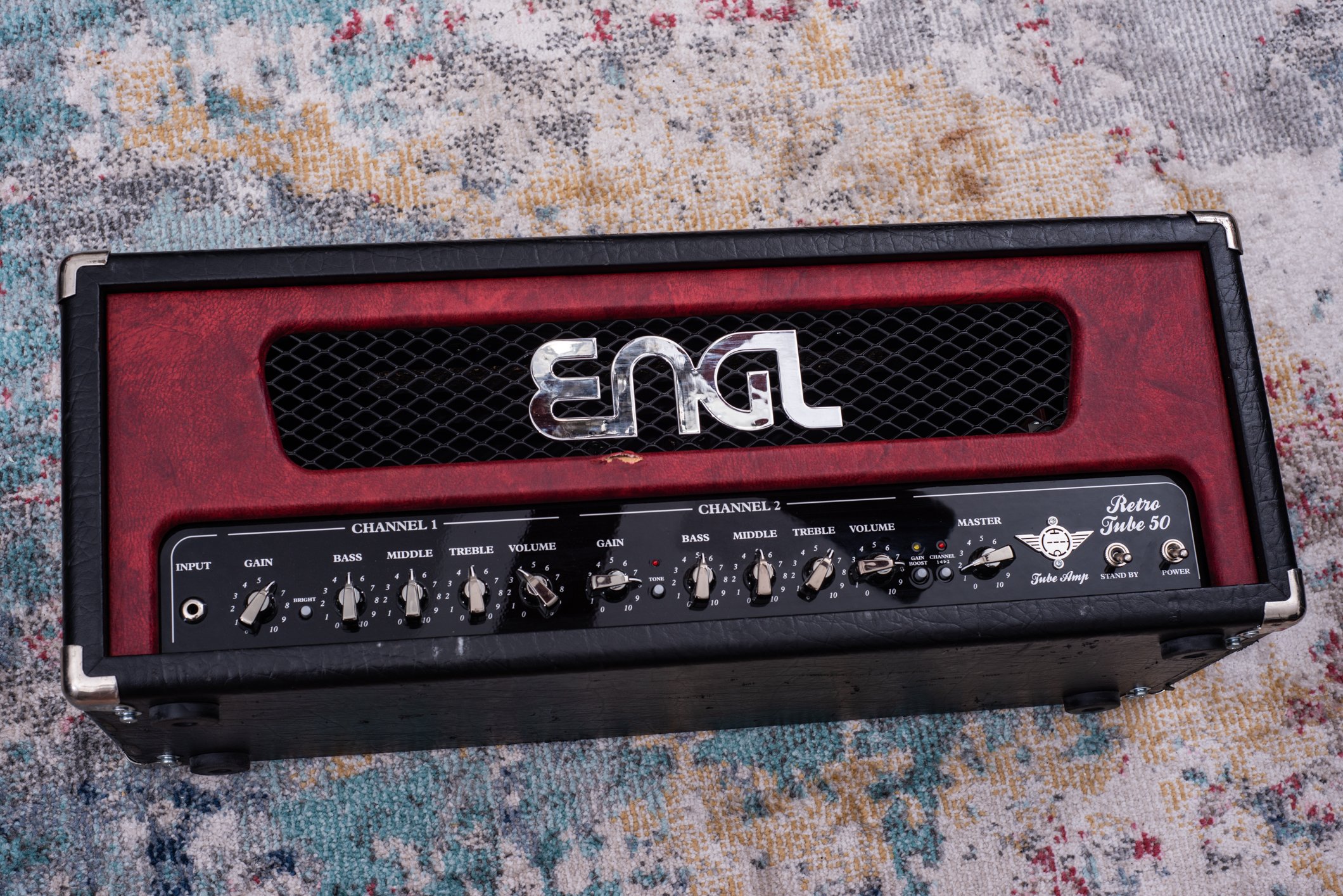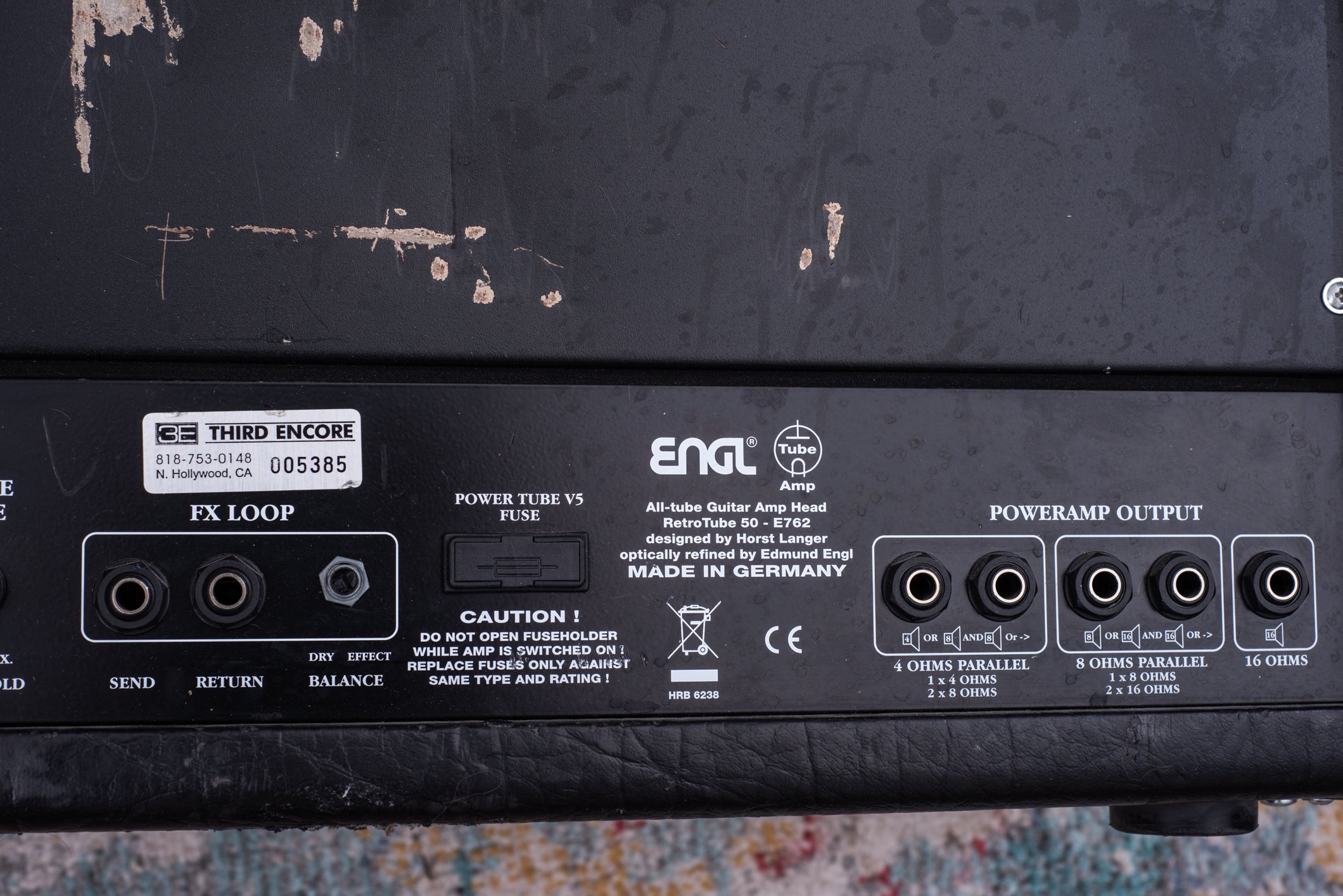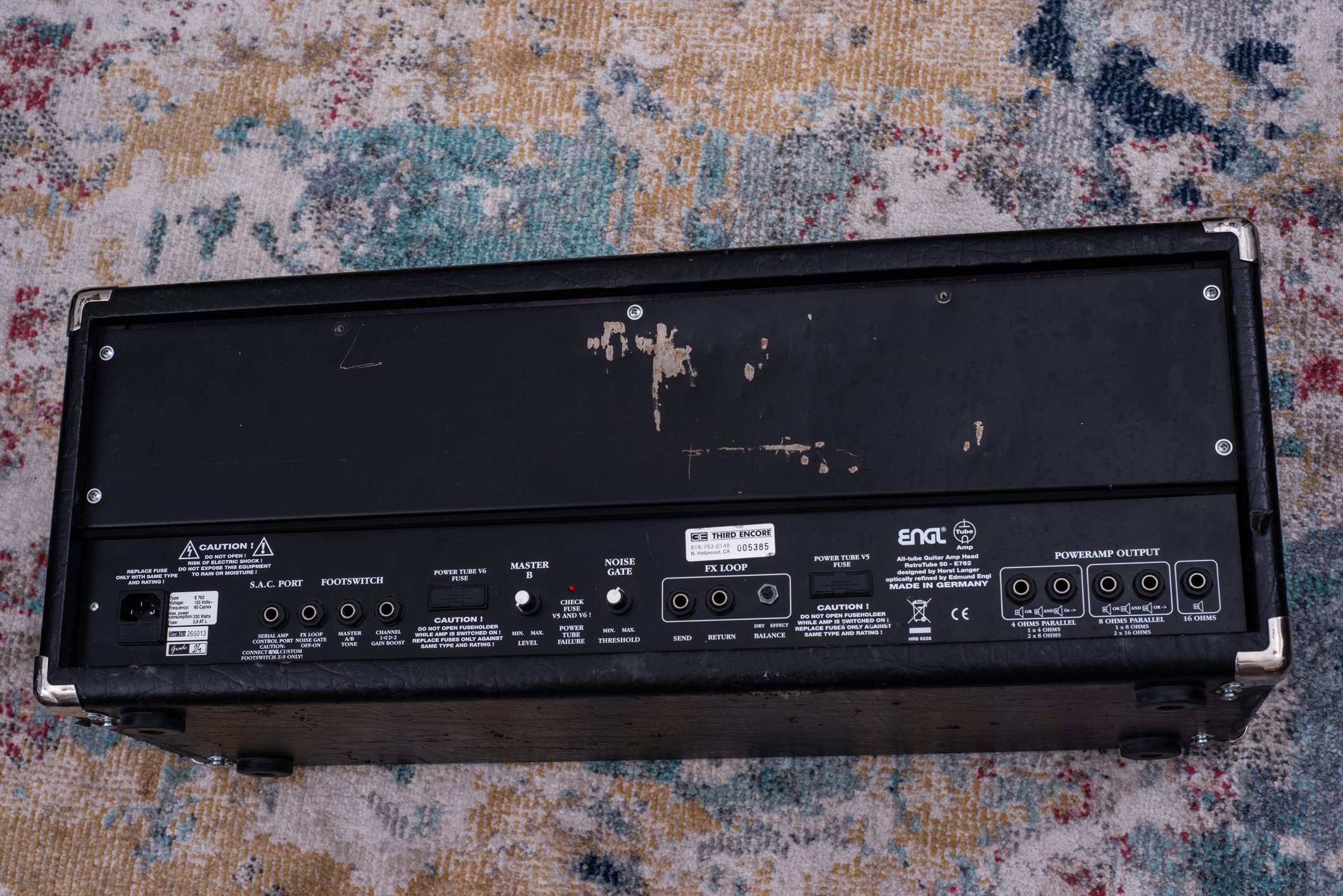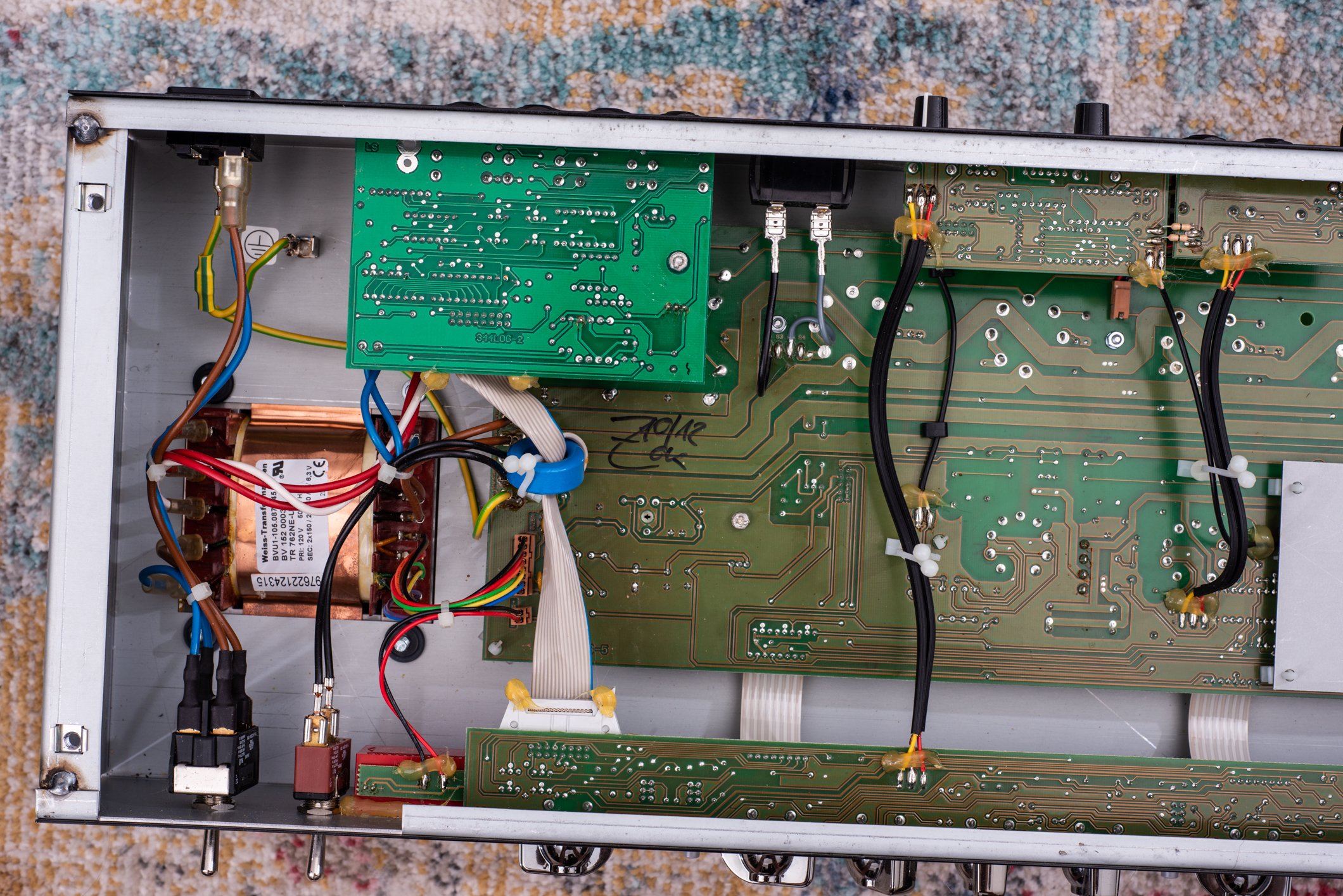2013 ENGL Retro 50 (E762)
Specs
2 Channels
50w Output
2x EL34 Power Tubes
4x 12AX7 Preamp tubes
$1999 in 2014
Made in Germany
Overview
I acquired this amp after waiting over a month for a GC to ship it. It’s in fairly rough condition, but everything works so I have no complaints - I’m much more forgiving of cosmetiaclly damaged amps than I am of guitars.
This short lived amp was introduced in 2012 and only ran for a few years (The newest one I’ve seen is from 2015), and was ENGL’s answer to the booming market of vintage-leaning high gain amps. Around that time, I remember amps like the updated circuit Splawn Quickrod, Landry LS100, Mesa Transatlantic series, and more really taking off in popularity as 80s rock and metal were gaining more popularity again. It’s a two channel amp, but each channel can use the footswitchable gain boost without a noticeable volume change, so it effectively has 4 different sounds you can access easily.
Channel 1 is a clean channel, as expected, with a bright switch. I find the clean to be fairly standard, but the gain boosted version of this channel sounds quite nice to me. This was pretty normal for the time, to have an amp focused on this kind of “vintage” gain tone have a fairly uninspiring clean channel. That’s not to say it’s a bad clean, it just doesn’t have a crazy unique tone, it’s more of an effects platform or just there for reverb-drenched ballads. Adding the gain boost gets it into a nice mid gain crunch territory, but with a looser low end and a bit more upper mids that cuts through nicely - a great rhythm channel with some light picking or strumming, but dig in for a nice sounding fill or lead.
Channel 2 can be quite gainy, and the “tone” switch has a pretty drastic effect on the tone, boosting the lower mids noticeably. This can have the effect of losing some string definition, especially when this channel is in its gain boost mode. It’s extremely thick this way, great for borderline fuzz sounds or leads, and overly saturated palm mutes, but it’s probably not desirable for most rhythm sounds especially for classic hard rock, which this amp seems to be aimed at. Otherwise, the tone is quite neutral, lacking the bright “kerrang” of more Marshall-style gain circuits, but not as low heavy as amps like my Mesa Royal Atlantic or a Rectifier in vintage mode. While I think this is a very cool sounding amp, and arguably underrated, it’s easy to see why it never sold that well and ended up discontinued, while amps with a little more unique spin like Quickrods are still in production today 10 years later.
As for other features, it has an effects loop, switchable second master volume (located on the rear panel, for some reason), and a built-in noise gate. These features work very well, and the best way to use them is with the optional (and expensive) 6-button Z-9 footswitch. This is the same footswitch my Raider combo uses, and it’s very cool - it still uses a standard TRS cable, plugged into the SAC port, instead of a more complicated cable type. You can also use it with three separate 2-button footswitches like the Z-4, also using TRS cables, for the same functionality. I usually use a single 2-button, for switching channels and turning on/off the gain boost - it’s nice to have the options and this configuration is very similar to the older Savage which has the same 3x 2-button footswitch jacks. I like features like this because it helps make the amp a little more adaptable, if I can’t find a specific footswitch cable or if I took this to a jam or gig, I can still get by with more common footswitches if I really needed to.










